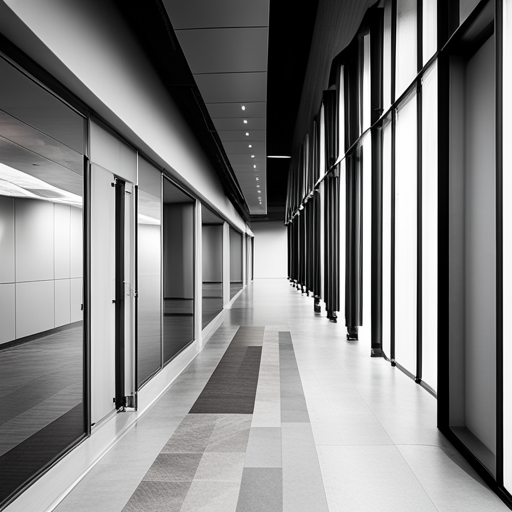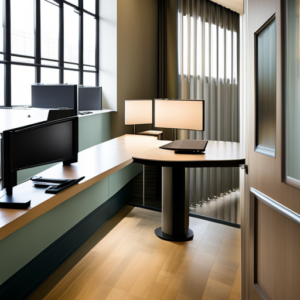In today’s competitive business landscape, optimising your supply chain for maximum efficiency is essential for long-term success. Streamlining your supply chain processes can lead to improved productivity, cost savings, and enhanced customer satisfaction. However, achieving a streamlined supply chain requires a strategic approach and the implementation of key strategies and best practices.
Let’s explore effective ways to streamline your supply chain and maximise efficiency. From leveraging technology solutions to improving communication and collaboration with suppliers and logistics partners, we will uncover the key tactics you need to adopt. We will also uncover the importance of data analysis and predictive analytics in identifying bottlenecks and optimising inventory management.
By following these strategies and best practices, businesses can enhance their supply chain operations, reduce lead times, and increase overall productivity. Whether you are a small startup or a large multinational corporation, streamlining your supply chain can lead to significant bottom-line improvements and a competitive advantage in the market.
The importance of streamlining your supply chain
A streamlined supply chain is crucial for businesses of all sizes and industries. It ensures that the right products are in the right place at the right time, minimising lead times and reducing costs. Streamlining your supply chain can also enhance customer satisfaction by improving order fulfilment and reducing delivery delays. In addition, efficient supply chain management allows businesses to respond quickly to changes in demand, giving them a competitive advantage in the market.
However, many businesses face challenges in achieving supply chain efficiency. These challenges can include lack of visibility, poor communication, manual processes, and inefficient inventory management. Addressing these challenges requires the adoption of key strategies and best practices.
Common challenges in supply chain management
 One common challenge in supply chain management is the lack of visibility across the entire supply chain. Without visibility, businesses can struggle to track inventory, identify bottlenecks, and make data-driven decisions. Another challenge is poor communication and collaboration with suppliers and logistics partners. Inefficient communication can lead to delays, errors, and increased costs. Manual processes and outdated technology systems are also common challenges that hinder supply chain efficiency.
One common challenge in supply chain management is the lack of visibility across the entire supply chain. Without visibility, businesses can struggle to track inventory, identify bottlenecks, and make data-driven decisions. Another challenge is poor communication and collaboration with suppliers and logistics partners. Inefficient communication can lead to delays, errors, and increased costs. Manual processes and outdated technology systems are also common challenges that hinder supply chain efficiency.
To overcome these challenges, businesses need to implement strategies that streamline their supply chain processes, improve communication, and leverage technology solutions.
Key strategies for streamlining your supply chain
- Implementing Technology for Supply Chain Optimisation
Leveraging technology solutions is a key strategy for streamlining your supply chain. From inventory management systems to transportation management software, technology can automate processes, improve visibility, and enhance collaboration. For example, implementing an advanced warehouse management system can optimise inventory levels, reduce storage costs, and improve order accuracy. Additionally, utilising cloud-based platforms can enable real-time data sharing and facilitate seamless communication with suppliers and logistics partners.
- Best Practices for Inventory Management
Efficient inventory management is crucial for a streamlined supply chain. Adopting best practices such as demand forecasting, just-in-time inventory, and vendor-managed inventory can help optimise inventory levels and reduce carrying costs. Utilising barcode scanning and RFID technology can improve accuracy and speed in inventory tracking. Furthermore, implementing automated reorder systems can ensure timely replenishment and prevent stockouts or overstock situations.
- The Role of Data Analytics in Supply Chain Efficiency
Data analytics plays a vital role in identifying bottlenecks and optimising supply chain processes. By analysing historical data and real-time information, businesses can gain insights into demand patterns, supplier performance, and transportation efficiency. Predictive analytics can help forecast demand accurately, enabling proactive inventory management and reducing the risk of stockouts or excess inventory. Data-driven decision-making also allows businesses to identify areas for improvement, such as optimising transportation routes or reducing lead times.
Implementing technology for supply chain optimisation
Building collaborative partnerships with suppliers and logistics partners is essential for supply chain optimisation. By fostering strong relationships, businesses can improve communication, share data, and align goals. Collaborative partnerships can result in shared risk and rewards, improved service levels, and increased efficiency. For example, implementing vendor-managed inventory (VMI) programs can enable suppliers to have real-time visibility into inventory levels, leading to better demand planning and reduced stockouts.
Best practices for inventory management
To illustrate the effectiveness of supply chain optimisation, let’s look at two case studies:
- Company XYZ, a multinational retail corporation, implemented an advanced transportation management system that optimised route planning and reduced transportation costs by 15%. This resulted in improved on-time delivery and customer satisfaction.
- Startup ABC, a direct-to-consumer e-commerce brand, utilised a cloud-based inventory management system that enabled real-time tracking of inventory levels across multiple warehouses. This allowed them to reduce stockouts by 30% and improve order fulfilment time.
The role of data analytics in supply chain efficiency
 Streamlining your supply chain is a continuous process that requires ongoing evaluation and improvement. By adopting key strategies and best practices, businesses can enhance their supply chain operations, reduce lead times, and increase overall productivity. From leveraging technology solutions to improving communication and collaboration, each aspect of the supply chain plays a crucial role in achieving efficiency.
Streamlining your supply chain is a continuous process that requires ongoing evaluation and improvement. By adopting key strategies and best practices, businesses can enhance their supply chain operations, reduce lead times, and increase overall productivity. From leveraging technology solutions to improving communication and collaboration, each aspect of the supply chain plays a crucial role in achieving efficiency.
In the future, advancements in technology, such as the Internet of Things (IoT) and blockchain, will further revolutionise supply chain management. These technologies will enable real-time tracking, improved transparency, and enhanced security throughout the supply chain. By embracing these innovations and continuously refining their processes, businesses can stay ahead of the competition and thrive in today’s fast-paced global economy.
The future of supply chain optimisation
Collaboration is key to streamlining the supply chain and achieving maximum efficiency. Establishing strong relationships and partnerships with suppliers, logistics providers, and other stakeholders can lead to improved communication, better coordination, and faster problem-solving.
One way to foster collaborative partnerships is through the implementation of vendor-managed inventory (VMI) programs. VMI allows suppliers to monitor and manage inventory levels at the customer’s location. This ensures that the customer never runs out of stock while reducing the burden of inventory management. By sharing real-time data and working together, both the supplier and the customer can optimise inventory levels and improve overall supply chain efficiency.
Another strategy for improved collaboration is the implementation of electronic data interchange (EDI) systems. EDI allows for the electronic exchange of business documents, such as purchase orders and invoices, between trading partners. This eliminates the need for manual data entry and reduces the chances of errors or delays. By streamlining communication and automating processes, EDI systems enable faster order processing, improved accuracy, and enhanced collaboration between supply chain partners.
In addition to VMI and EDI, regular communication and feedback loops are essential for successful collaboration. By maintaining open lines of communication with suppliers and logistics partners, businesses can address issues promptly, discuss potential improvements, and jointly develop solutions. Regular meetings, performance reviews, and shared goals can foster a culture of collaboration and continuous improvement within the supply chain.
Collaborative partnerships are vital for streamlining the supply chain and maximising efficiency. By working together, businesses can improve communication, optimise inventory levels, and solve problems faster, ultimately enhancing overall supply chain performance.
Intaus Group have been helping organisations with their supply chain for years, and have a wealth of knowledge in this field. Contact us today to find out more about how we can help you achieve successful collaboration within your supply chain.

 Expertise and Professionalism
Expertise and Professionalism While commercial cleaning services play a significant role in keeping your workspace clean, there are steps you can take to maintain cleanliness and organisation on a daily basis:
While commercial cleaning services play a significant role in keeping your workspace clean, there are steps you can take to maintain cleanliness and organisation on a daily basis:
 Facilities management is a multifaceted discipline that encompasses a wide range of responsibilities. The primary role of a facilities manager is to ensure that their organisation’s physical assets are well-maintained, safe, and functional. Here are some of the key responsibilities of a facilities manager:
Facilities management is a multifaceted discipline that encompasses a wide range of responsibilities. The primary role of a facilities manager is to ensure that their organisation’s physical assets are well-maintained, safe, and functional. Here are some of the key responsibilities of a facilities manager: